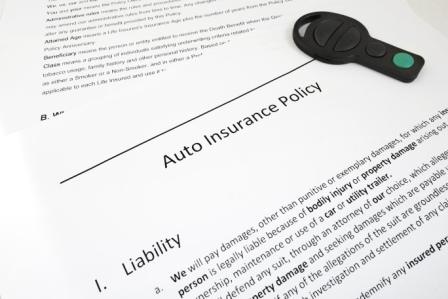Within a Michigan personal auto insurance policy there may be up to five separate coverage items that comprise liability insurance, consisting of:
- Bodily Injury Liability
- Property Damage Liability
- Property Protection Insurance (PPI)
- Uninsured Motorist Liability
- Underinsured Motorist Liability
That just sounds confusing right out of the gate – so, let’s first address liability insurance as a concept then review each liability related coverage you may find within your auto policy.
The term liable simply means you are responsible by law for something. In the course of owning and/or operating an automobile you could become legally responsible – liable – if someone else suffers injuries or damages to their property as the result of an auto accident. Liability insurance is the portion of your auto policy designed to pay for financial damages resulting from you being found liable for injuries or property damage.
Within most Michigan auto insurance policies there is separate coverage for injuring someone (Bodily Injury Liability) and for damaging someone else’s property (Property Damage Liability). Some insurance companies will combine bodily injury and property damage as one combined liability coverage (Combined Single Limit or CSL).
Property Protection Insurance (PPI) is also coverage that responds for property damage liability – it is a separate coverage mandated by the State of Michigan, provides $1,000,000 of coverage, and is specifically for property damage that occurs within the state. If, as a result of an auto accident, you are liable for property damages and the accident occurred in Michigan PPI coverage responds whereas if the accident occurred outside of Michigan then Property Damage Liability coverage would respond.
Uninsured and Underinsured Motorist Liability coverage flip the concept of liability insurance. Each coverage, rather than paying damages for which you are found liable, would compensate you if another person is determine to be legally responsible for injuries you suffer in an auto accident. Uninsured Motorist Liability would pay if the legally responsible party doesn’t have any auto insurance. Underinsured Motorist Liability would pay if the liable party doesn’t have sufficient insurance to pay the entirety of damages for which they are determined to be legally responsible.
The amount of liability insurance you purchase is called the limit of liability. The limit being the maximum dollar amount your insurance company would pay on your behalf if you were liable for injuries or property damage.
The limit of liability coverage provided by your Michigan auto insurance policy will be identified on the declarations (dec) page, which is simply a summary of your policy identifying the individuals and vehicles insured, the time period of coverage, and specific coverage and premium details for each insured vehicle.
The limit(s) of liability coverage are either expressed as single or split limits:
- Single limit coverage is easy enough to understand – if your coverage limit is $300,000 then that is the maximum amount your policy would pay for that specific liability coverage.
- Split limit coverage is somewhat confusing at it specifies two different limits – the first dollar amount being the maximum liability coverage your policy would provide for any one individual being injured while the second amount is the maximum liability coverage the policy would provide for any one accident.
If your Bodily Injury Liability coverage has a split limit of $100,000/$300,000 (100/300) then $100,000 would be the limit of liability coverage for each individual injured while $300,000 would be the overall limit of liability coverage for an accident (regardless how many people may be injured).
What if you don’t have enough liability insurance?
This is an important, and frequently overlooked, consideration when purchasing auto insurance.
Michigan is a no-fault state, which means – in most instances – individuals turn to their own insurance for damages resulting from an auto accident, including medical bills and lost wages. Under no-fault insurance liability claims are less common, however, there are still instances when an individual may be legally responsible (liable) for property damage or injuries – notably when there is serious injury, death, or dismemberment.
Imagine you are driving, glance down at a text on your phone, and happen to miss a traffic light and t-bone another vehicle.
- What if the driver and/or passenger(s) in the other vehicle are seriously injured to the extent they may need multiple surgeries, extensive physical therapy and even then may suffer debilitating effects from the accident for a long time?
- How much money would adequately compensate them for their pain, suffering, and diminished quality of life?
If the answer turned out to be $500,000 and you only purchased $100,000 of Bodily Injury Liability coverage you would be responsible for the difference. Paying $400,000 of a judgement could severely impact your financial situation for a long time – a good reason to purchase as much liability coverage as you can reasonably afford! You may be surprised to find, in most instances, you can significantly increase the liability coverage within your auto insurance policy for a modest additional cost.

